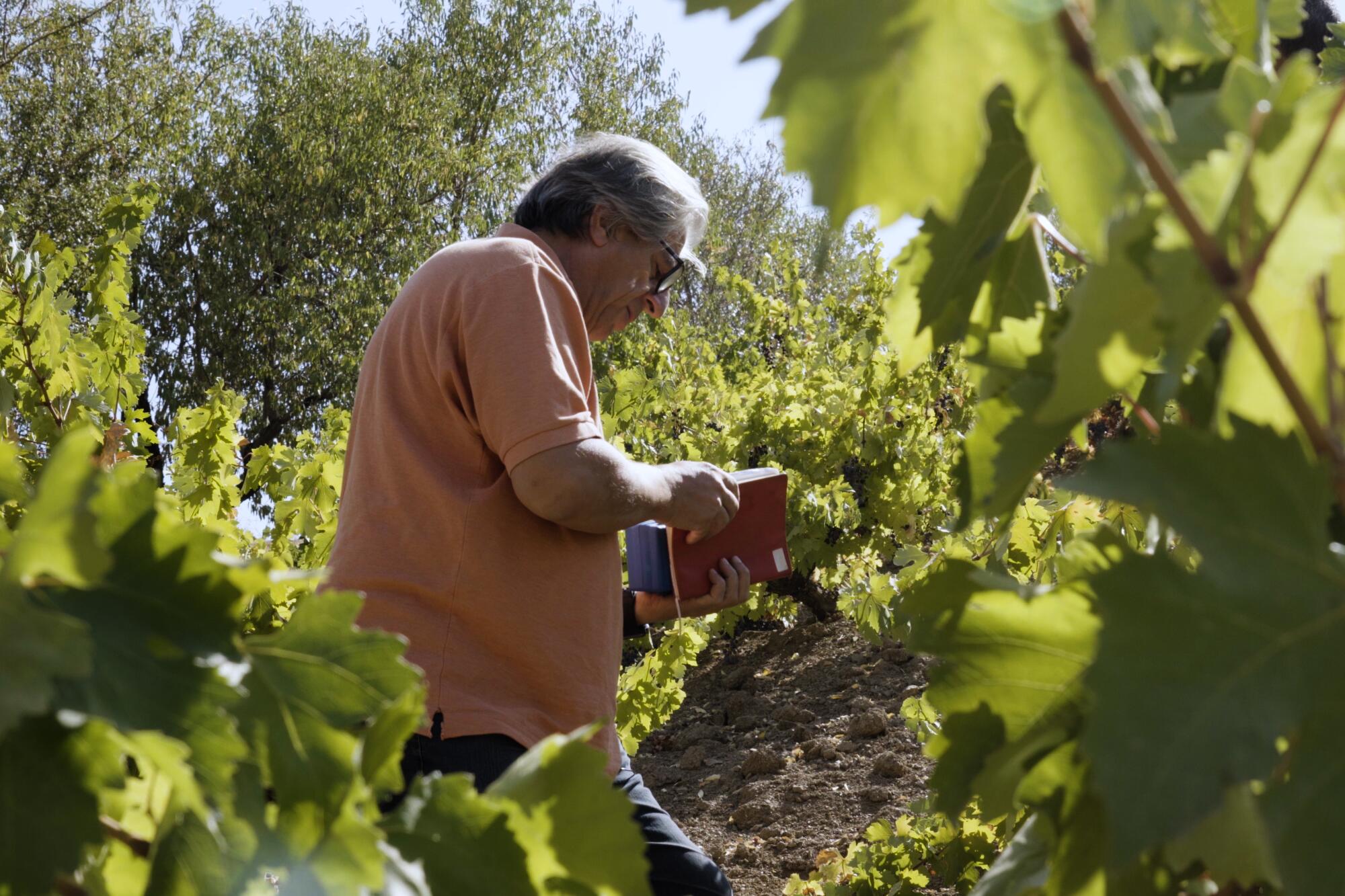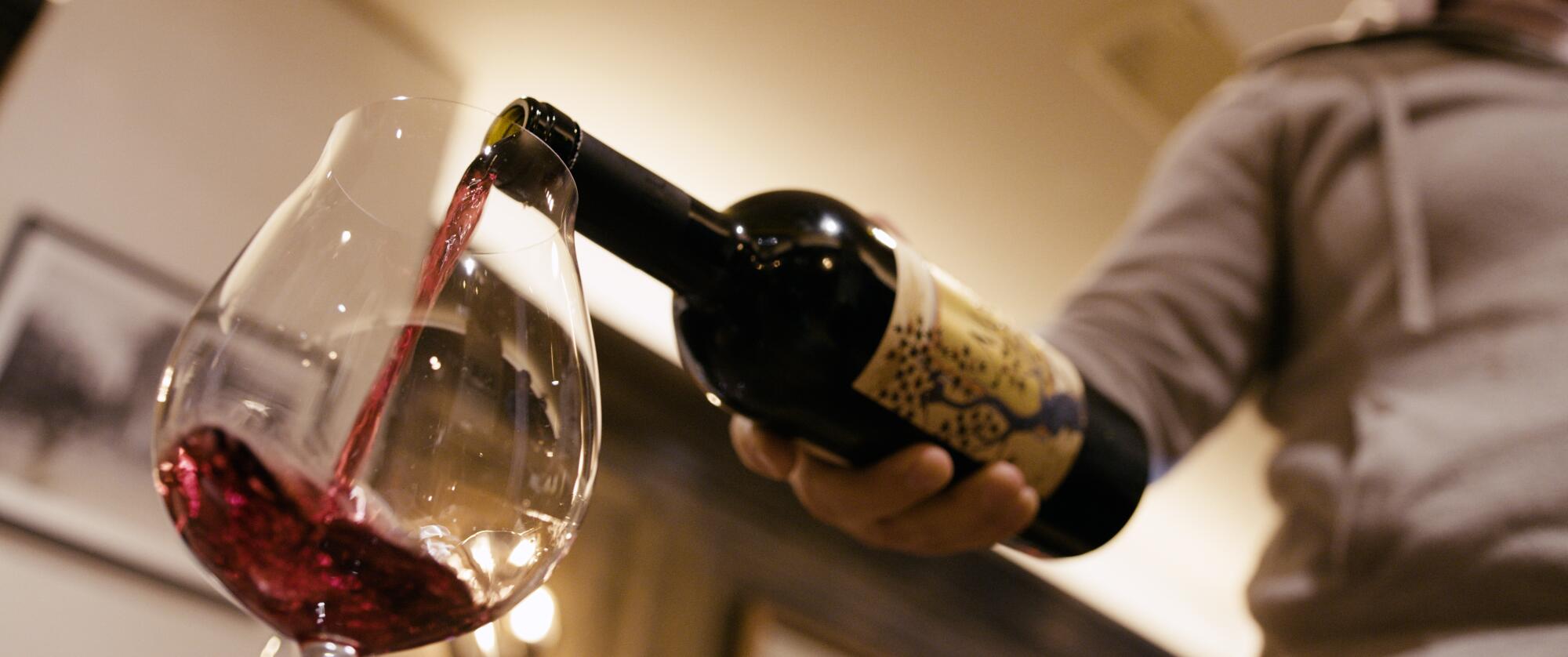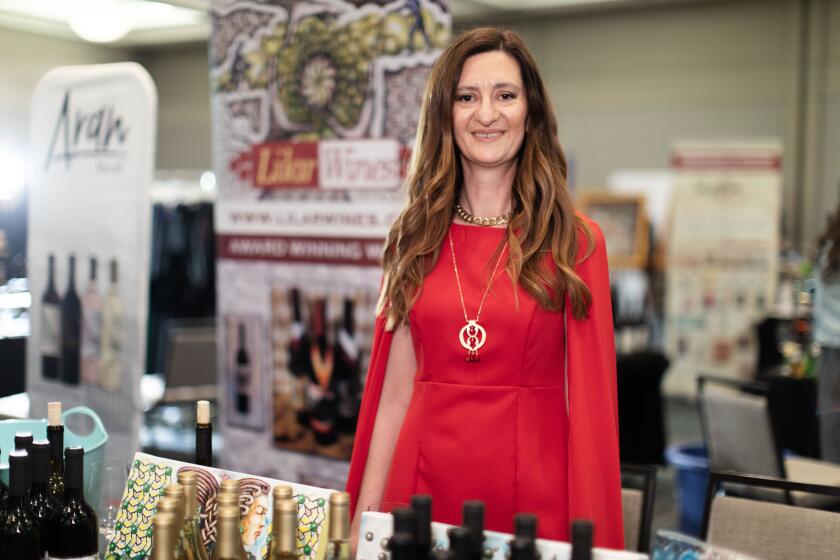
- Share via
Several years ago, Vahe Keushguerian, one of the pioneers of modern Armenian winemaking, had a daring idea — one that would involve smuggling native grapes from Iran, making wine in Armenia and presenting it to the world as a wine made in exile.
Time and time again wine creates a simple yet unbreakable bond between man and land against all odds of incompatibility. Keushguerian faced not just the incompatibility of nature versus man but the incompatibility of history and politics between land and man.
His quest to save long-suppressed winemaking traditions in Iran, a country where alcohol has been banned since the 1979 Islamic Revolution, became real when filmmaker Jason Wise decided to focus his documentary lens on Keushguerian’s dream project.
“It’s the most dangerous wine in the world,” Dustin Wilson, the master sommelier and co-founder of Verve Wine says in the film “SOMM: Cup of Salvation,” the most recent in a series of films that began with Wise’s 2012 documentary “SOMM,” which tracked aspiring master sommeliers as they tried to pass the notoriously difficult wine exam.
Ancient winery found in Armenia
There were more than 300 wineries in Iran before the 1979 revolution, along with thriving operations involving many Armenians who were forcefully relocated there during the reign of Shah Abbas in the 16th century. Indeed, Iran is considered one of the birthplaces of winemaking, along with Armenia, Georgia and other areas of the Caucasus mountains.
Keushguerian chose Sardasht County, close to the 44-kilometer border that Iran shares with Armenia, to source the grapes for his project. In 2021, after some research, he found a small isolated vineyard with the indigenous grape Rasheh. He was able to transport enough grapes to Armenia to make 14,000 bottles of wine in his WineWorks winery with winemaker Arman Manoukian. The wine was named Mòläna to honor 13th century Persian poet and scholar Rumi, who was often referred to as Moulana. Aged in stainless-steel tanks, the ruby-colored wine with notes of raspberry and cherry and hints of winter spices showcases the native terroir with a rich volcanic soil and high elevation.
“The aim is to show what a shame it is that Iran does not allow such a product to be made in Iran,” says Keushguerian. “I am not saying that when they taste the product, they will say, ‘Maybe we should make a wine.’ Not yet. But at some point they should.”

It’s no surprise that Los Angeles, home to a thriving Armenian community, proves one of the best places to try Old World Armenian wines, which use traditional methods to create robust reds and effervescent orange and natural wines.
This year, through his connections Keushguerian was able to transport another batch of Rasheh grapes for 8,000 more bottles of Mòläna. He expects this to be the last phase of his project due to its dangerous nature.
In an early scene in the film, we see anxiety on the face of Keushguerian’s wine producer daughter, Aimee, when she asks her father whether he thinks there will be trouble when the trucks full of grapes cross the border from Iran to Armenia.
“I’ll call you from jail,” he says, only half-joking.

“Cup of Salvation” has been touring cities throughout the United States, including Los Angeles, and will be viewable on the wine-and-food streaming service SOMM TV in early 2024. But if you’re curious about what Iranian wine in exile tastes like, you can find the fruits of Keushguerian’s project here in Southern California.
The first release of the wine made with Rasheh grapes from Iran was recently tasted by Californian winemakers of Iranian origin at Momed in Atwater Village. Working closely with sommelier Ehsan Mackani, chef Vartan Abgaryan curated a special paired menu highlighting traditional Iranian dishes. Grilled veal tongue with smoked labneh served with a fresh chickpea salad, braised beans and green harissa seemed a perfect match for this wine.

“When I took a sip of Mòläna and I took a breath, I immediately remembered biting into a fresh date,” says Abgaryan. “That fresh date has a sweetness but it’s not sugary. Same with this wine — it is a well-balanced and structured wine.”
Mòläna is currently on Momed’s menu by the bottle. It is imported by Storica wine (which is offering a SOMM four-pack of other wines shown in the film plus limited bottles of Mòläna) and is being sold in local stores like Remedy Liquor and Mission Wine & Spirits.
In “Cup of Salvation” the Iranian winemaking project is only part of the story. Through the Keushguerians’ journey, the documentary captures the struggles and the dedication of Armenians while harvesting the fruit and making wine during the conflict that broke out between Artsakh and Azerbaijan in 2020.
Despite the danger of being killed by snipers, father and daughter decided to go forward with that year’s harvest in their vineyard in the village Khachik, which is on the border of Armenia and Azerbaijan. They wore bullet-proof vests and made sure to finish their work quickly along with the other harvesters.
“This film shows what the terroir is not just from a standpoint of the dirt, where grapes are grown,” says Wise, “but how important it is for the actual vine. Over generations these vines have been growing in the same place, which is Armenia, and what you end up with is people and the vine sort of becoming the same and can’t exist without each other.”
More to Read
Eat your way across L.A.
Get our weekly Tasting Notes newsletter for reviews, news and more.
You may occasionally receive promotional content from the Los Angeles Times.









